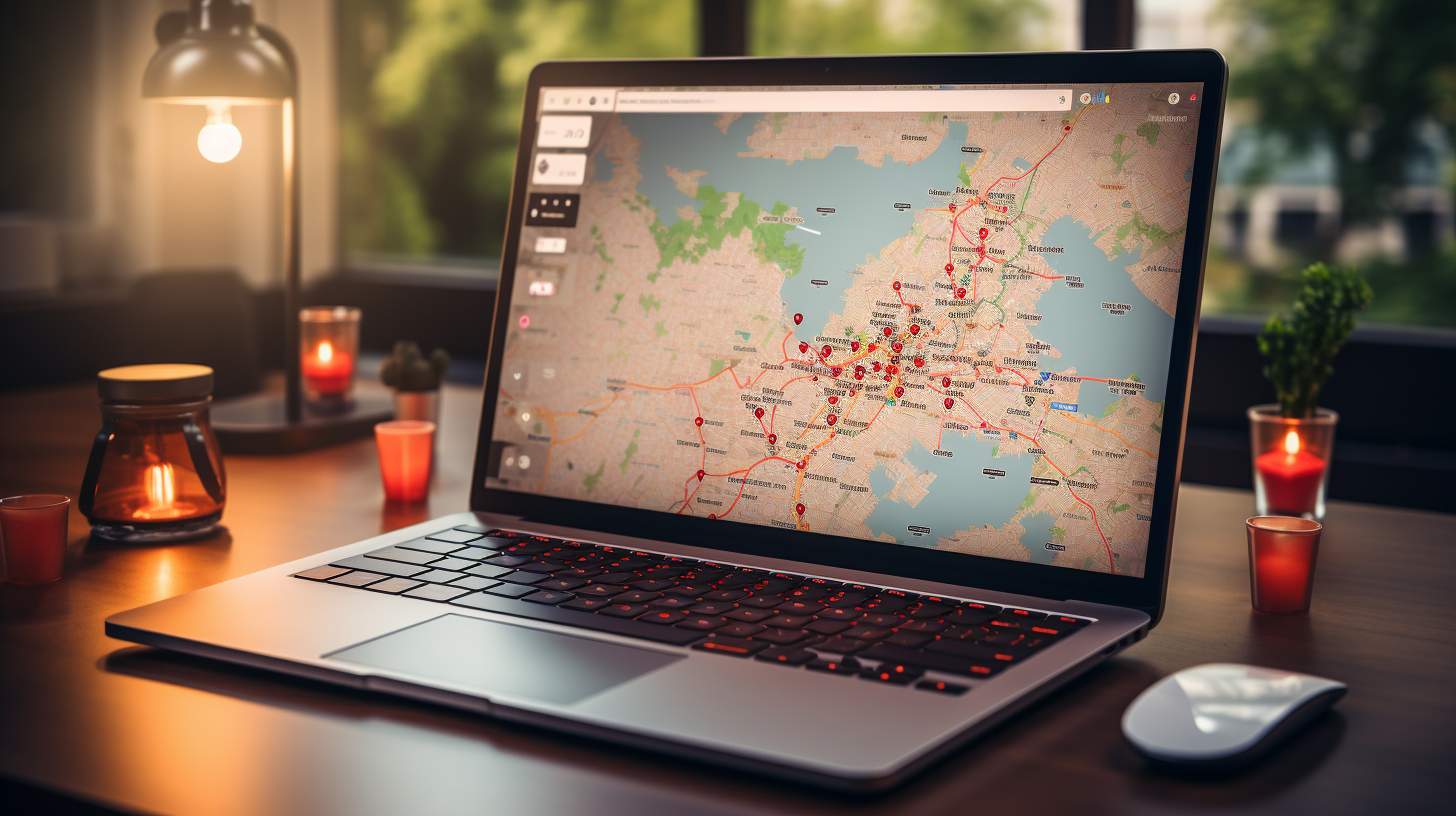

Navigating the world of local SEO content is like charting a course through your own digital backyard; you’ve got to know the landmarks.
In 2023, you’re aiming to not only catch the eye of search engines but to resonate with your local audience. You’ll need to optimize for Google My Business to ensure you’re the talk of the town online.
Tailoring your content to speak directly to local interests, events, and needs can help you build a bridge between your brand and the community. Remember, it’s not just about keywords; it’s about connections.
Make every word count by leveraging local citations, ensuring your site is mobile-friendly, and adopting advanced local SEO techniques to stay ahead.
Your content should be a handshake, welcoming both your neighbours and search algorithms to your virtual doorstep.
Grasping the concept of local SEO is your first step towards enhancing your business’s online visibility within your community. Local SEO is pivotal, accounting for 46% of all Google searches. It’s about ensuring that when potential customers search for products or services in their area, your local business pops up in those local search results.
To kick off your Local SEO strategy, optimize your Google Business Profile. This free listing is vital for appearing in Google’s local search and maps. Keep your NAP information—Name, Address, Phone—consistent across all platforms to avoid confusing search engines and customers alike.
Local Keyword Research is another cornerstone. You’ve got to understand what terms people are using to find local businesses like yours. Incorporate these keywords into your website’s content, meta tags, and even social media profiles to improve relevance.
Don’t forget to create local content that resonates with your community. Whether it’s blog posts about local events or guides relevant to your area, such content can significantly boost your visibility.
Lastly, use tools like Brightlocal to manage your local listings. Citations, which are online references to your business, play a critical role in local SEO. They help establish prominence and trust with search engines, which can improve your ranking in local search results.
Moving on to Google My Business, you’ll want to meticulously optimize your profile as it’s a crucial element in your local SEO arsenal. This platform allows your business listing to flourish on both Google Search and Google Maps, enhancing your visibility to potential local customers.
To begin, ensure your contact information, also known as NAP (Name, Address, Phone number), isn’t only complete but consistent across the web. This consistency is pivotal for Google to confidently present your business in search results.
Next, you’ll need to verify your business with Google. This process adds credibility and shows Google that your business is legitimate, which can positively influence your local SEO. Once verified, dive into the details: update your business hours regularly, and make sure they reflect any seasonal changes or special events to avoid confusing your customers.
Your online presence can be significantly strengthened by engaging with customers through Google My Business. Promptly respond to reviews and make use of the Q&A feature to establish trust. Posting updates or offers directly on your Google My Business profile keeps your audience informed and engaged, potentially boosting your local search rankings.
To further cement your local SEO, integrate Google My Business with your website’s location pages. By doing so, you create a seamless experience for users transitioning from your Google Map listing to your website. Additionally, add relevant photos that showcase your offerings and entice customers to choose you over competitors.
To effectively boost your local online presence, you’ll need to master the art of crafting content strategies that resonate deeply with your community’s interests and needs. Begin by creating content that not only highlights your products and services but also weaves in the rich tapestry of your local community’s culture and events. Your content strategy should include local industry news, educational resources, and participation in conversations that matter to the residents of your service area.
When you create content, it’s essential to incorporate location keywords naturally to align with the way people search for local information. This practice helps in optimizing your website for search engines and improves your visibility to those seeking what you offer in their vicinity. Moreover, by promoting local events and providing valuable resources like maps and event calendars, you establish your brand as an authority and a valuable member of the community.
Remember, local SEO isn’t just about pushing your offerings; it’s about becoming a go-to source for relevant information that benefits your audience. Engage them with top-of-the-funnel content that addresses broader interests and needs, which can lead to greater trust and loyalty.
Additionally, since the majority of searches are done on mobile devices, ensure your website is mobile-friendly. Cater to the growing trend of voice search by optimizing for conversational queries, making it easier for users to find you through voice-activated devices.
Building on your localized content strategies, it’s crucial to leverage every local citation to significantly enhance your business’s online visibility. Local citations are mentions of your business’s NAP—Name, Address, Phone Number—across the web. They play a key role in boosting your local SEO by helping search engines verify the accuracy of your business details, which can improve your local rankings.
Start by conducting a citation audit to ensure your NAP information is consistent across all online directories. Inconsistencies can confuse search engines and potential customers, damaging your local SEO efforts. You’ll find your business listed in various places, from Yelp to Manta and Foursquare. Make sure the information is accurate and up to date. If you spot discrepancies, reach out and correct them as soon as possible.
Next, claim your Google My Business Profile if you haven’t done so already. This is a powerful local SEO tool that allows you to manage your online presence across Google, including search and maps. Ensure your profile is complete, accurate, and that it provides a link back to your website.
Don’t stop there. Look for additional business directories relevant to your industry and region. Adding your business to these can further enhance your local citations. Check out where your competitors are listed and consider getting your business cited there as well.
With the majority of local searches coming from mobile devices, it’s essential that you optimize your website for mobile to ensure a seamless user experience. Mobile optimization isn’t just a luxury; it’s a necessity dictated by user preferences and SEO best practices.
Google uses mobile-friendliness as one of the key ranking factors. To check if your site meets the standard, use Google’s Mobile-Friendly Test tool. This will highlight areas of improvement and confirm whether your website is optimized for mobile users.
Ensure your website has a responsive design that adjusts content to fit various screen sizes on mobile devices. This adaptability enhances user interactions by making navigation intuitive and content easily digestible.
When you optimize your content for mobile, prioritize loading speed. A fast-loading site keeps users engaged and reduces bounce rates, signalling to search engines that your content is valuable and relevant.
Remember, an optimal user experience on mobile includes legible text without zooming, accessible menus, and easy-to-tap buttons—all of which contribute to a positive perception of your local business.
By integrating mobile optimization into your local SEO strategy, you’re not only catering to the majority who use mobile devices for searches, but you’re also positioning your business advantageously in local search results.
How can you further elevate your local SEO strategy beyond mobile optimization to ensure your business stands out in the digital landscape?
One advanced technique is to tailor your content for conversational queries, targeting long-tail keywords that align with voice searches. This means understanding how your customers ask questions in natural language and incorporating those specific phrases into your content.
To enhance trustworthiness, which is crucial for Google and other search engines, focus on strengthening your E-A-T signals. Create content that showcases customer testimonials, and expertise badges, and includes backlinks from authoritative sites. This not only boosts your local SEO but also reassures potential customers of your business’s legitimacy and quality of service.
Don’t overlook the power of video content to increase engagement and conversions. As users turn to videos for both entertainment and education, integrating this medium into your local SEO strategy can significantly improve organic traffic.
Additionally, make sure you’re using geographic Schema markup. This advanced SEO technique provides search engines with precise location-specific information, helping your business become more visible in local searches. It’s like giving Google an easy-to-read map of where your business is and what it offers.
Lastly, building backlinks with location-specific anchor text can further reinforce your local relevance. When other reputable businesses or local service directories link to you with your city or neighborhood included in the anchor text, it sends a strong signal to search engines about where your expertise lies.

Were changing the digital landscape. Gone is the expensive digital agency, instead we are working hard to put the power in your hands while leveraging our team of experts. Stop wasting your time and hard earned money and start putting it towards systems that generate results.
Copyright © 2024 Sixo Agency.